The Great Battle of Kursk: a defensive operation of the troops of the Central Front. Part of 2
On the second day of the Battle of Kursk, the troops of the Central Front launched a counterattack against a German group that had penetrated the front. The most powerful front-line mobile unit was the 2nd tank army led by Alexei Rodin. The 16th and 19th Panzer Corps, the 17th Guards Rifle Corps were to take part in the counterattack. The counterattack also involved the artillery corps of the breakthrough of General N. Ignatov, a mortar brigade, two regiments of jet mortars and two regiments of self-propelled artillery.
2-I tank army had a high impact power and high mobility, so before the battle it was positioned so that it could be used in a defensive operation to support any of the three armies. Three variants of the 2 Army’s actions were provided - when the Germans struck the left flank of the 48 Army, the positions of the 13 Army and the right flank of the 70 Army and the left flank of the 13.
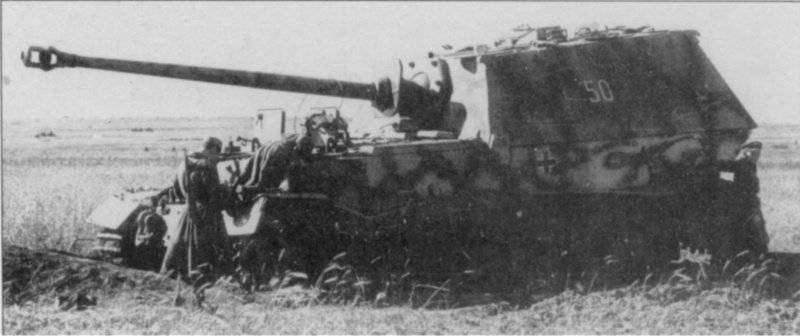
In war, the delay in death is similar, therefore, already at 9 a.m. on July 30, Rokossovsky ordered that the corps of the Army of the Motherland immediately come out of the concentration areas. They moved in accordance with the second option - to the aid of the 5th army. In accordance with this version of the corps were to go on the second day of the battle in the area Berezovets, Olkhovatka. Depending on the direction of the enemy’s strike, one of the tank corps was supposed to engage in a battle, and the second was to strike at the enemy’s flank. On the river Again, which interfered with the movement of armored vehicles, new crossings were reinforced and built before the battle began. From lunch on July 13, the corps of the 5nd Panzer Army were on the march. They moved in small groups - a company, a battalion, which was associated with the sad experience of 2-1941, when large masses of armored vehicles suffered heavy losses from German attacks aviation. The advanced units received orders to occupy the starting lines for the planned counterattack and deter the enemy using ambush tactics.
German tanks 2-th tank division in the offensive. July 1943
At noon, due to the gradual clarification of the situation and the understanding that the enemy is advancing away from the Orel-Kursk railway, the commander in 12.20 handed over 2 tank army 19 to Ivan Vasilyev to operational control. According to the original plan, the 19 Corps was to operate as part of the 70 Army. In 19.00, the 19 corps reached the Molochič, Petroselki, Novoselki, Yasenok line, where he received an order to go to the Samodurovki area and immediately hit the enemy in the direction of Podolyan. In fact, the corps was supposed to start a counter battle with the shock forces of the German group. The movement and preparation for the attack was delayed until nightfall, so the counterstrike was postponed until morning.
In 22.00, the 2 army received the task: with the 3 tank corps to take up defense at the turn of Polsela Goryanovo, the Settlement; The 16 tank corps and the formations of the 17 Guards Rifle Corps were to advance at dawn towards Steppe, Butyrki, restoring the position of the left flank of the 13 Army; The 19 tank corps strike in the direction of Saborovka, Podolian. As a result, the forces of the 2 Army must have been beaten into engaging in a head-on battle, the initial plan underwent dramatic changes. The 19 Corps, which was not included in the original plans, had to do a lot of work related to making passes through the battle formations of the infantry. Especially a lot of time was spent on making corridors in their minefields, anti-tank structures of the 13 Army. As a result, not only in the morning of 6, but by noon the 19 tank corps was not ready to attack.
In the morning of July 6, only V. Grigoriev’s 16 tank corps could attack. But he also expected 75 of the Guards Rifle Division of the 17 Guards Rifle Corps. From the beginning, the offensive was postponed to July 3 on July 6, since the division was on the march. Then the offensive was shifted to 5 in the morning, since the divisions had to establish a connection between the formations, artillery, reconnoiter and demine minefields. The blow was struck at the front width to 34 km. Artillery body breakthrough dealt a strong blow to the enemy. Then tanks and infantry went on the attack. The 107 Tank Brigade pressed German forces in the direction of Butyrka on 1 – 2 km, losing several tanks. However, then the brigade came under heavy fire buried in the land of German tanks and self-propelled guns. The return fire gave minimal results - the shells did not penetrate the frontal armor of heavy German tanks. As a result, the brigade was defeated, having lost 46 tanks in a few hours - 29 T-34 and 17 T-70. Only 4 machines remained in the ranks, which retreated. Such a brutal defeat forced the Grigoriev’s comorus to give the order to the 164 tank brigade to stop the attack and withdraw. Total body for the day lost 88 machines, of which 69 - irrevocably.
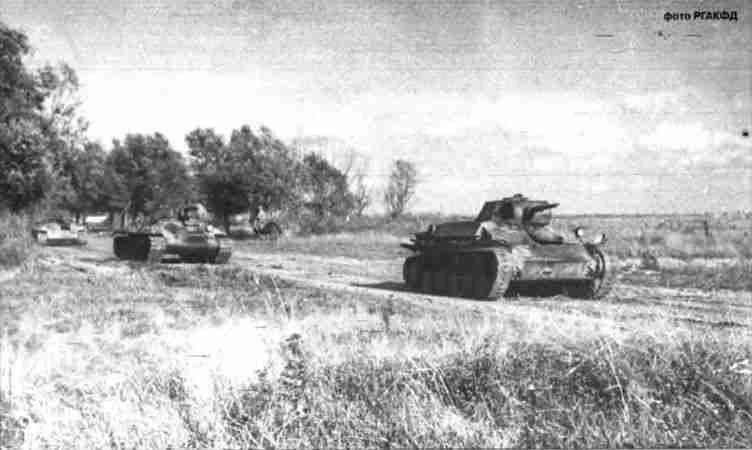
The tanks of the 2 Tank Army are being launched for a counterattack. July 1943
The 19 tank corps, having spent too much time preparing the counterattack, began to move to Podolia only in 17.00, when the 16 corps was already defeated and was forced to retreat to its original positions. The 19 tank corps was also unable to complete the task. The corps met strong resistance from artillery and enemy tanks, air strikes, and retreated to its original position. The 19 corps suffered sensitive losses: the 101-I tank crew - 7 tanks, the 20-I tank crew - 22 tanks (including 15 T-34), the 79-I tank tanks - 17 tanks. True, for the 20 of the German Tank Division, this counterstrike was expensive. With minor losses on the first day of the fighting, by the end of 6 Julia, the number of combat-ready machines of the division decreased from 73 to 50. The 17 Guards Rifle Corps counter-strike also failed. He encountered large groups of German tanks and was attacked by enemy aircraft. The 16.00 hull retreated to its original positions.
According to the results of a not too successful counterblow, the 2-I tank army received orders from all corps to go on the defensive. The 3 tank corps was entrenched at the turn of Berezovets, the 16 corps was in the area of Olkhovatka, the 11-I detached guards tank brigade at the turn of Endovishche, Molochy, at the junction of the 16-th and 19-th corps. 19 th tank corps 7 July took the line Warm, Beauty. The tanks were entrenched, becoming firing points, covered by infantry. In addition, all the corps had an anti-tank division 85-mm guns that could withstand heavy German tanks and self-propelled guns.
The counter-strike did not lead to significant success, but slowed the pace of the German offensive. 9-th German army 6 July advanced only 2 km. By the evening of July 6, the command had withdrawn from the battle the first echelon of the 13 th army, now the enemy was met by the second echelon divisions - the 307-I rifle, 70-I, 75-I and 6-I guards rifle divisions.
Model on the third day of the battle was planning to enter into battle 4-th tank division. Originally, it was planned to be deployed for the 9 Tank Division behind the Sons. But the Model made an amendment and the 4-I division had to step on the Warm. The disadvantage of this plan was the fact that the forces of the assault force were dispersed: the 2-i and 4-i tank divisions attacked the Warm, and the 292-i and 86-i infantry divisions of the 41-i tank corps - on Ponyri. Aviation resources were also distributed: in 5.00, the 7.00 1 th air corps was supposed to support the 47 th tank corps, and from 7.00 to 12.00 the 41 th corps. As a result, the battle on the northern face of the Kursk ledge broke up into battles for Ponyri and Olkhovatka.
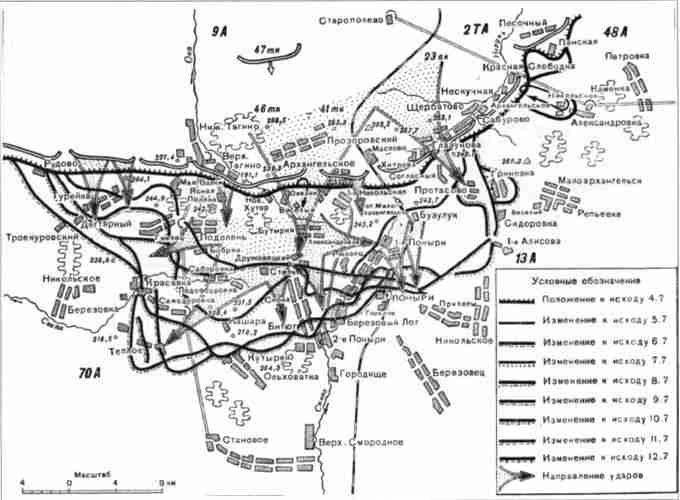
The general course of defensive battles on the Orel-Kursk direction. 5 – 12 July 1943 Source: Maxim Kolomiets, Mikhail Svirin With the participation of O. Baronov, D. Nedogonova KURSKAYA ARC 5 July - 23 August 1943 (http://lib.rus.ec/b/224976/read) .
Defense Art. Darlings
Another positive outcome of the July 6 counterstrike was a gain in time. He allowed time to regroup reserves. The direction of the strike of the German army was now known and this allowed the front command to tighten here the tank, artillery and rifle units of the Central Fleet. On the night of 7 July, the 2 th anti-tank brigade from the 48 Army arrived at the Ponyri, and two brigades from the 12 breakthrough division were deployed from the Maloarkhangelsky direction to the Ponyri. 15 artillery regiments, a heavy howitzer brigade, 2 anti-tank brigades were concentrated in the Ponyri area.
The station Ponyri occupied a very important strategic position, protecting the Orel-Kursk railway, where, as the command of the TF initially thought, the main attack of the enemy would be dealt, therefore the village was one of the defense units. The station was surrounded by controlled and uncontrolled minefields, where they installed a large number of captured aerial bombs and large-caliber projectiles, which were converted into landfill propellers. The defense of the Drones was reinforced with tanks dug into the ground. A small station was turned into a real fortress, with a powerful anti-tank defense. The battle in the Ponyri area began on July 6. On this day, three German attacks were repelled. German 9-I tank division tried to break through the gap that formed between the farms of Steppe and Rzhavets, in the area 1-x and 2-x Ponyrey. Combat units of the 18 Tank Division, 86, 292 and 78 Infantry Divisions, and up to 170 tanks and SPGs, including the Tigers of the 505 Heavy Tank Battalion, participated in the battle.
At dawn 7 July began storming Ponyri. He was attacked by the Harpe 41 tank units. German troops 5 once went on the attack, trying to break through the defenses of the 307 Infantry Division under the command of Mikhail Enshin. The first were heavy tank, followed by medium and armored personnel carriers with infantry. Assault guns supported the attack from the scene, firing at the enemy firing points discovered. Every time the Germans were rejected. Heavy artillery fire with powerful minefields forced the enemy to retreat.
However, in the morning 10 about two battalions of German infantry with medium tanks and self-propelled guns were able to break through to the north-western outskirts of "2's Ponyrey." But the commander put the reserve of the division into battle - the 2 battalion of infantry and the 103 tank tank brigade, and they supported the artillery and counterattacked the enemy and restored the situation. After the 11 clock, the Germans changed the direction of the attack and struck from the northeast. In a stubborn battle, the German troops occupied the 15-e Maya state farm for 1 hours and came close to the Ponyri. However, subsequent attempts to break into the territory of the village and the station were repelled by Soviet troops.
307-rifle division in Kursk. 1943
In the evening, the Germans attacked from three directions: dropping into the compound formations of the 18 tank and 86 and 292 infantry divisions. Parts of the 307 Division were forced to retreat to the southern part of the Ponyri. The battle in the station, already in the light of burning houses, lasted all night. The commander of the 13 army ordered to recapture lost positions. The attack of the infantry of the 307 division was supported by the tanks of the 51 and 103 of the tank brigades of the 3 of the tank corps. Also, the 129 Tank Brigade with 50 tanks (including 10 KV and 18 T-34) and the 27 Guards Heavy Tank Regiment were to take part in the attack. In the event of German pressure gaining on the station, the 4 airborne division was transferred to it. On the morning of July 8, Soviet troops regained control of the station.
In the afternoon, German troops again occupied the station. In the evening, the 307 Division switched to a counterattack and dropped the enemy. July 9 battles for Ponyri continued with the same bitterness. On this day, the German command changed tactics and tried to take the station “into ticks” with a blow on both sides of the railway. For the attack, they formed a strike group (“Kal group”, commanded by Major Kal), which included the 654 Battalion of Ferdinand heavy assault guns, 216 Division 150-mm SAU Brumbar and 75-mm and 105 -mm assault guns (according to Soviet data, the 505 Battalion "Tigers" went on the attack, according to the Germans, he fought in the Olkhovat sector). The attack was also supported by medium tanks and infantry. After a two-hour battle, the Germans broke through the state farm "1 May" to the village of Goreloye. Thus, the enemy broke through to the rear of the troops defending Ponyri. However, in the village of Gorely the Soviet soldiers organized an artillery fire bag, to which German tanks and assault guns had passed. The fire of several artillery regiments was supported by long-range artillery and mortars. The maneuver of the German armored group was stopped by a minefield with numerous mine bombs. In addition, the Germans were subjected to air strikes. The German attack was stopped. The Germans lost 18 machines. Some turned out to be maintainable, they were evacuated at night and after repair they were transferred to the 19 tank corps.
In the evening of July 9, the Ponyri were finally unblocked by the strike of the 4 Guards Airborne Division. On the morning of July 10, the German command redeployed the 292 Infantry Division and threw the 10 Division into the battle. But thanks to the support of the paratroopers, they managed to keep the situation under control. In the evening, the bloodless 307 division was taken to the second line. 3 and 4 units of the Guard Airborne Divisions took the forefront. 10 July Soviet soldiers fought off the enemy "1-e May." On July 11, the Germans attacked again, but all attacks were repelled. 12-13 July, the Germans tried to evacuate the damaged armored vehicles, but the operation failed. Opponent lost 5 "Ferdinands". During the 5 days of continuous battle, the warriors of the 307 Division repulsed 32 with massive enemy tank and infantry attacks.
"Ferdinand" before attacking art. Darlings.
German tank PzKpfw IV and armored personnel carrier SdKfz 251, shot down on the outskirts of Art. Darlings. 15 July 1943
"Ferdinand", lined by artillery near the village. Burned and broken "Broomber." Outskirts Art. Darlings.
Soviet counterattack on the Oryol-Kursk direction. 7 July 1943
To be continued ...
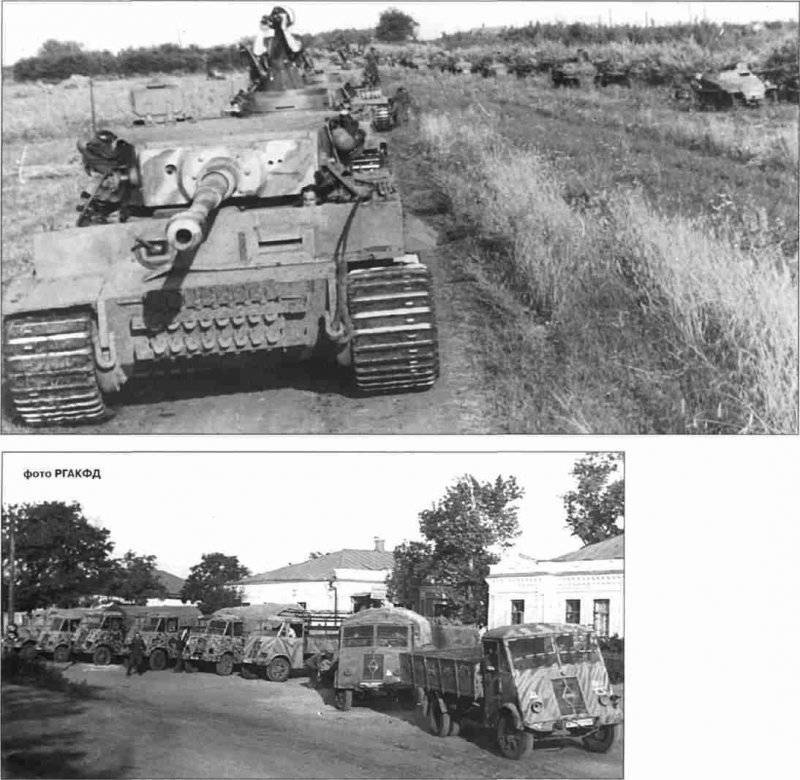
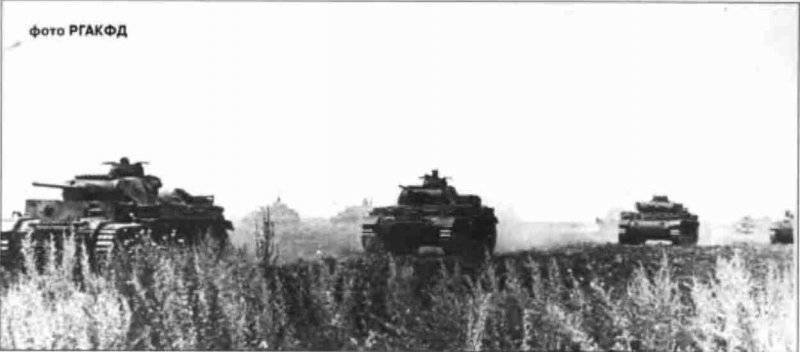
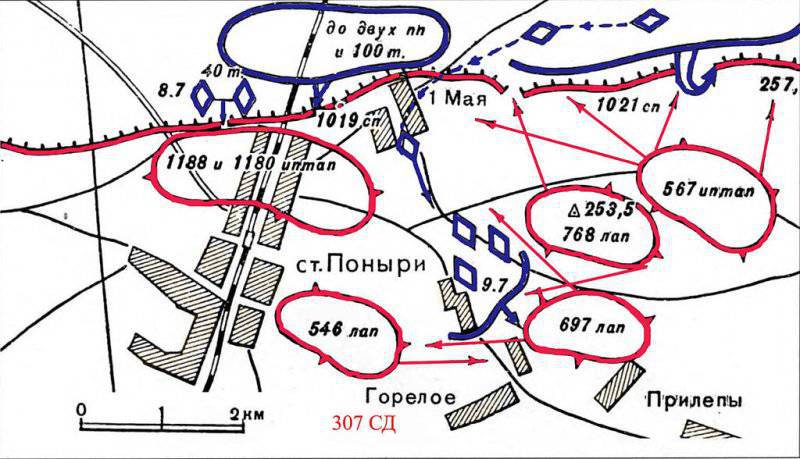
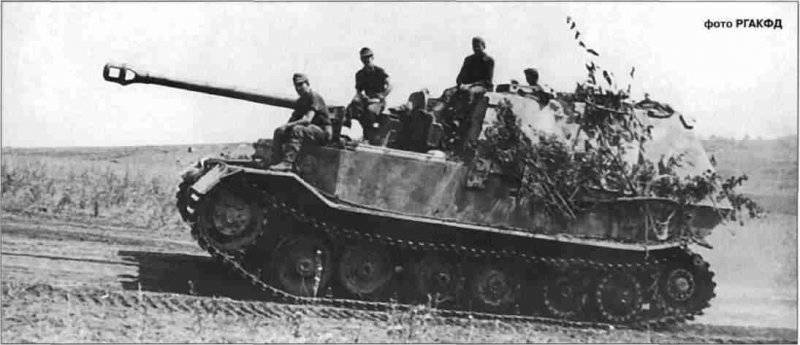
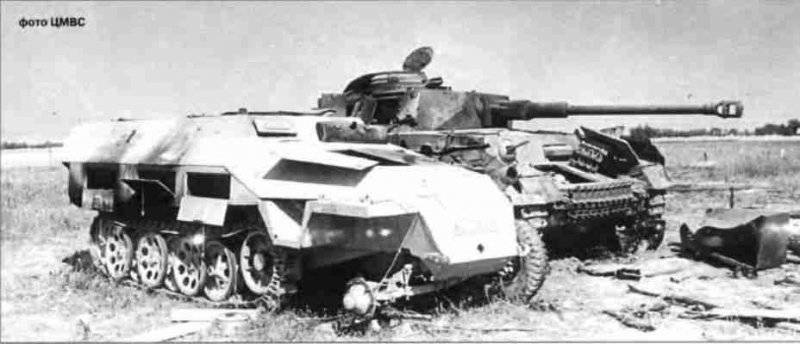
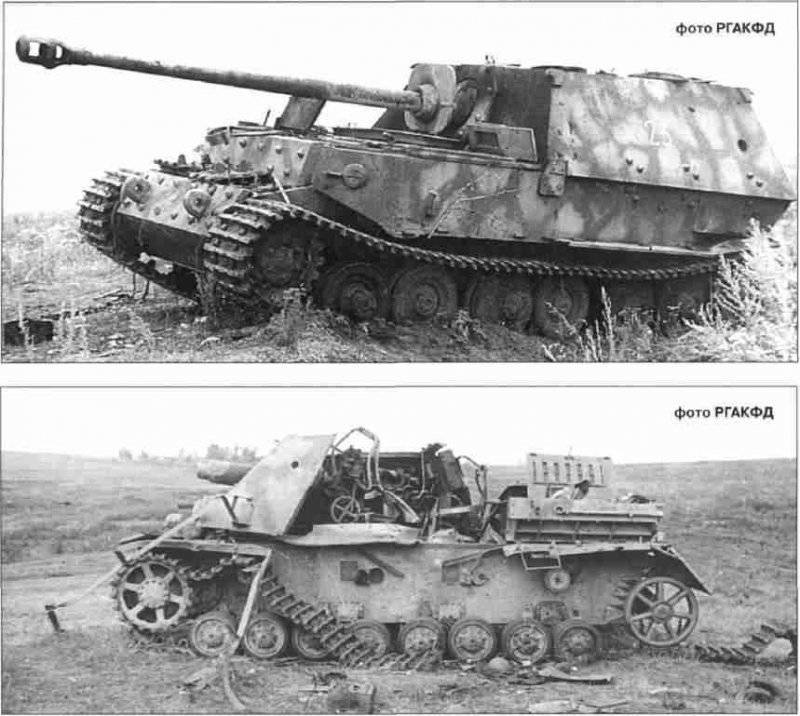
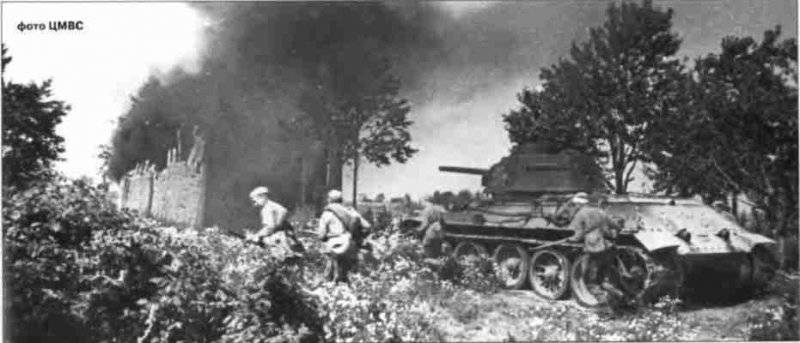
Information